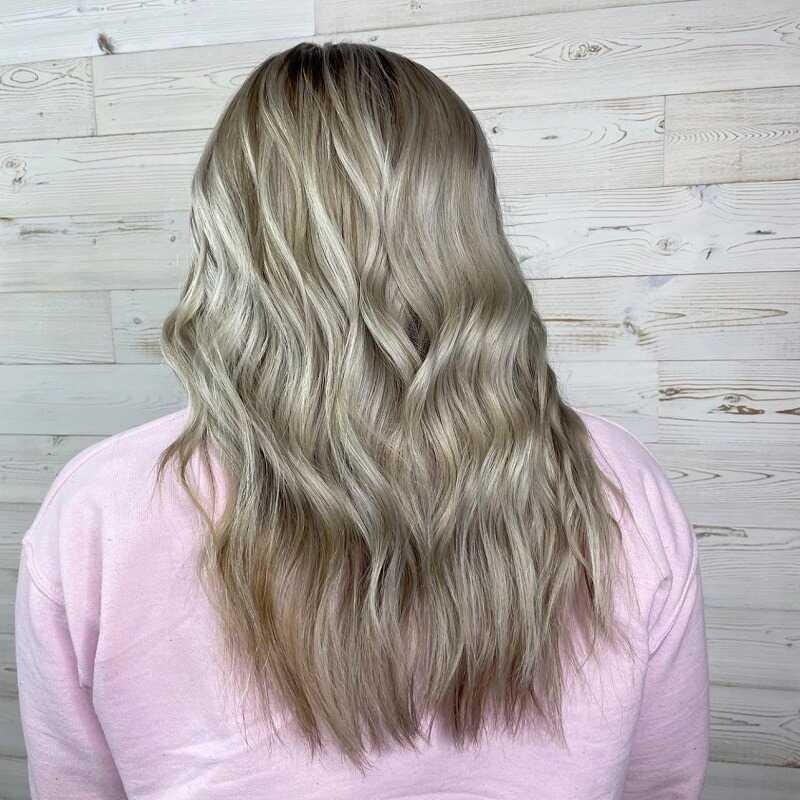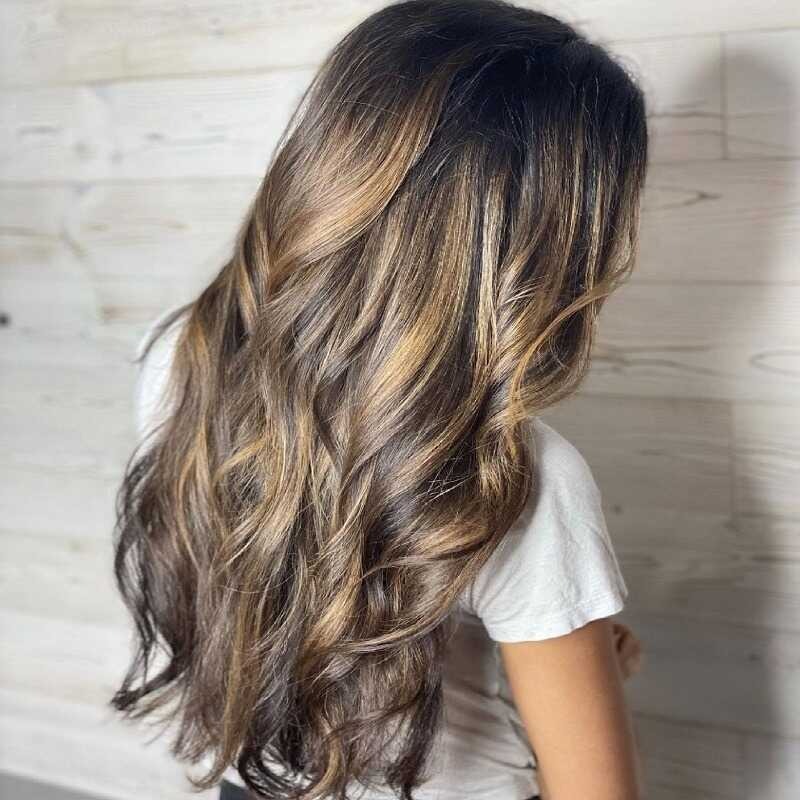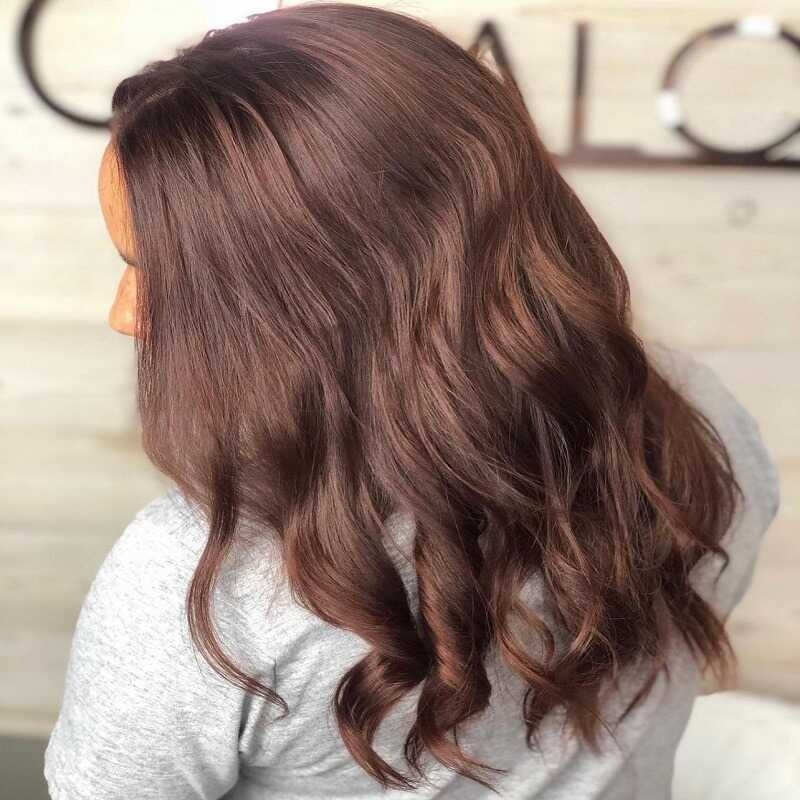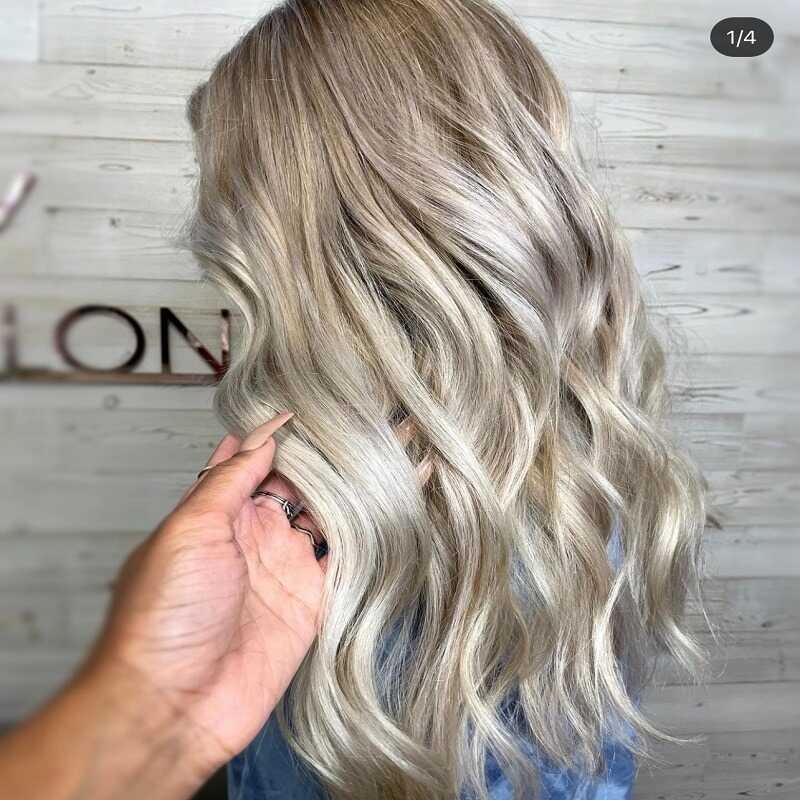Why Women Lose Hair: Causes & Solutions 2024
Understanding Hair Loss in Women
Hair loss in women, medically known as female pattern hair loss (FPHL), is a condition that significantly impacts many women's lives, both physically and emotionally. Unlike the more widely recognized male pattern baldness, which typically manifests as a receding hairline or balding at the crown, hair loss in women often presents as a general thinning of hair across the scalp. This thinning can lead to a noticeable reduction in hair volume and, in some cases, visible scalp patches.
Causes of Hair Loss in Women
The causes of female hair loss are multifaceted and can range from genetic factors to various medical conditions and lifestyle influences. One of the primary contributors is genetics, where a family history of hair loss can increase one's risk. Hormonal changes, such as those experienced during menopause, pregnancy, or as a result of polycystic ovary syndrome (PCOS), can also play a significant role. Other factors include stress, nutritional deficiencies, certain medical treatments like chemotherapy, and harsh hair care practices that can damage the hair follicles over time.
Diagnosing female pattern hair loss involves a comprehensive approach, including a detailed medical history, physical examination of the hair and scalp, and sometimes blood tests to rule out other conditions. In some cases, a biopsy of the scalp may be necessary to confirm the diagnosis.
3 Common Types of Hair Loss in Women
Hair loss in women can manifest in several distinct patterns, each with its own set of causes, characteristics, and treatment options. Understanding these common types is crucial for diagnosis and management. Here's a detailed description of each:
Androgenetic Alopecia (Female Pattern Hair Loss orFPHL)
Androgenetic alopecia, also known as Female Pattern Baldness, is a hereditary condition that causes progressive thinning of the hair. It is the most common form of hair loss in women and is characterized by a reduction in hair density, which affects the crown and frontal scalp while sparing the frontal hairline. This condition is driven by the sensitivity of hair follicles to androgens (male hormones), which are present in women in small amounts.
The thinning in Female Pattern Baldnesstypically becomes noticeable as a widening of the part or less volume in one's ponytail. It can start as early as the late teenage years but more commonly appears after menopause, indicating the influence of hormonal changes in its development.
Treatment options for androgenetic alopecia include topical minoxidil, which is the only FDA-approved medication for treating female pattern hair loss. Other treatments may involve hormone therapy, such as oral contraceptives or anti-androgens for those who experience this condition due to hormonal imbalances.
Telogen Effluvium
Telogen effluvium is a form of diffuse hair loss that occurs when a significant stressor causes hair follicles to prematurely enter the telogen phase (resting phase) of the hair growth cycle, leading to widespread thinning of the hair. This condition can be triggered by various events, including severe emotional stress, major surgery, significant weight loss, childbirth, or severe illness.
The key characteristic of telogen effluvium is a temporary increase in hair shedding, often noticed when washing or brushing the hair. This condition usually resolves on its own once the triggering event has passed and the body recovers. However, chronic telogen effluvium can occur when the stressor persists or when there's a chronic underlying health issue, requiring further medical investigation.
Treatment focuses on identifying and addressing the underlying cause, whether it be nutritional deficiencies, stress management, or recovery from illness. Once the trigger is removed or managed, hair usually regains its normal fullness within several months.
Alopecia Areata
Alopecia areata is an autoimmune disorder that results in sudden, patchy hair loss. The immune system mistakenly attacks healthy hair follicles, causing them to shrink and dramatically slow down hair production. This condition can affect any hair-bearing area of the body, including the scalp, eyebrows, and beard, but most commonly presents as one or several round, smooth patches of baldness on the scalp.
Alopecia areata can affect individuals of any age, including children and young adults. Its course is unpredictable; hair may regrow without treatment and then suddenly fall out again. The severity can also vary, from small, easily concealed spots to complete scalp hair loss (alopecia totalis) or even loss of all body hair (alopecia universalis).
There is no cure for alopecia areata, but treatments are available that can help hair regrow more quickly. These may include topical corticosteroids, topical immunotherapy, or injections of corticosteroids into the affected areas. For some, the use of wigs or hairpieces may be a preferred method to conceal the hair loss.
Understanding Hair Thinning andAge
Hair thinning as we age is a natural process influenced by a combination of genetic, hormonal, and environmental factors. The phenomenon is part of the broader spectrum of changes that our bodies undergo with aging. Here’s a detailed look into why hair tends to thin as we age:
Genetic Predisposition
Genetics play a crucial role in determining how your hair will age. If your family history includes individuals with thinning hair or baldness, you're more likely to experience similar changes. Genes affect the lifecycle of hair follicles, dictating their growth, rest, and shedding phases. Over time, genetically predisposed hair follicles may shrink and produce thinner, shorter hairs, or they may stop producing hair altogether.
Hormonal Changes
Hormones have a significant impact on hair growth and density. As we age, hormonal balances shift, especially during and after menopause for women, and these changes can lead to hair thinning. For instance, reduced levels of estrogen and progesterone can lead to a decrease in hair growth and hair thickness. In contrast, the relative increase in androgens (male hormones present in both men and women) can cause hair follicles to shrink, reducing hair volume.
Decreased Hair Follicle Regeneration
With aging, the rate of hair follicle regeneration slows down. Hair follicles go through cycles of growth (anagen phase), transition (catagen phase), and rest (telogen phase). As we age, more hair follicles enter the resting phase, and fewer remain in the growth phase, leading to thinner hair coverage over time. Additionally, the follicles themselves may produce hair that is finer and less pigmented (gray or white hair).
Nutritional Deficiencies
Nutritional status plays a vital role in hair health. As people age, they might experience changes in dietary habits or absorption abilities, leading to deficiencies in essential nutrients like proteins, vitamins (particularly B vitamins, vitamin D), minerals (like iron and zinc), and omega-3 fatty acids. These deficiencies can impact hair strength, growth, and overall health, contributing to thinning hair.
Health Conditions
Various health conditions more common in older adults can affect hair growth and quality. These include thyroid disorders, diabetes, and autoimmune diseases, among others. Medications used to treat these conditions can also have side effects that include hair thinning or loss.
Environmental and Lifestyle Factors
Exposure to environmental stressors, such as UV radiation, pollution, and harsh hair care practices, can accumulate over time, damaging hair and scalp health. Smoking and chronic stress are also known to negatively impact hair quality and may accelerate hair thinning with age.
Prevention and Management
While hair thinning with age is a natural process, certain strategies can help manage and mitigate its effects. These include maintaining a balanced diet rich in essential nutrients, adopting gentle hair care routines, reducing exposure to environmental stressors, and considering treatments like minoxidil or hormone replacement therapy under medical guidance. Regular health check-ups can also help identify and manage underlying health issues that might affect hair health.
What is DHT hormone?
Dihydrotestosterone (DHT) is a hormone that plays a significant role in hair loss, particularly in the condition known as androgenetic alopecia, which is commonly referred to as male pattern baldness or female pattern hair loss. DHT is derived from testosterone, a hormone present in both men and women, though in differing amounts. The conversion of testosterone to DHT is facilitated by the enzyme 5-alpha-reductase.
Role of DHT in Hair Loss
DHT binds to specific receptors on the hair follicles, particularly those located on the scalp's crown and hairline in men, and all over the scalp in women, though with a different pattern of thinning. For individuals genetically predisposed to hair loss, their hair follicles are more sensitive to DHT. This sensitivity leads to the miniaturization of hair follicles, shortening the hair growth cycle and eventually causing the hair follicles to shrink to a point where they can no longer produce visible hair.
Key Points About DHT and Hair Loss
- Genetic Predisposition:Not everyone is affected by DHT in the same way. Genetic factors determine the sensitivity of hair follicles to DHT, explaining why some individuals experience significant hair loss while others do not.
- Hair Growth Cycle:DHT affects the hair growth cycle by shortening the anagen phase (growth phase) and extending the telogen phase (resting phase), leading to thinner, shorter hairs and eventually hair loss.
- DHT Levels:Higher levels of DHT are not directly correlated with hair loss; rather, it's the sensitivity of hair follicles to DHT that matters. Therefore, two individuals with similar DHT levels could have vastly different hair loss experiences.
Treatments Targeting DHT
- Finasteride:An oral medication that inhibits the 5-alpha-reductase enzyme, reducing the conversion of testosterone to DHT. It's primarily used to treat male pattern baldness.
- Dutasteride: Similar to finasteride, but potentially more effective at blocking different types of 5-alpha-reductase enzymes, thus further reducing DHT levels. It's not officially approved for hair loss treatment in many countries but is used off-label for this purpose.
- Topical DHT Blockers:Certain shampoos and treatments contain ingredients that claim to block DHT from affecting the hair follicles. These can include natural extracts known for their DHT-inhibiting properties.
Understanding the role of DHT in hair loss has led to significant advancements in treatment options, offering hope to those affected by androgenetic alopecia. However, it's essential for individuals to consult with healthcare professionals to determine the most appropriate treatment plan based on their specific condition and health profile.
Treatment Options for Hair Loss in Women
Minoxidil, spironolactone, and finasteride are three widely used medications for treating hair loss, each with distinct mechanisms of action and applications. Here's an overview of each:
Minoxidil
Minoxidil is a topical medication originally developed as an oral drug for treating high blood pressure. It was later discovered to have a positive effect on hair growth, making it one of the most popular treatments for hair loss. It's most commonly used to treat androgenetic alopecia (male pattern baldness and female pattern hair loss) and is available over the counter in two forms: a liquid and a foam.
Mechanism: The exact mechanism by which minoxidil stimulates hair growth is not fully understood, but it's believed to widen blood vessels and open potassium channels, which increases blood flow to the scalp and hair follicles. This increased blood flow can rejuvenate shrunken hair follicles, increase their size, and prolong the growth phase of the hair cycle.
Usage: Minoxidil is applied directly to the scalp twice a day for men and once a day for women (depending on the concentration). It's important to note that hair loss may resume if the treatment is discontinued.
Spironolactone
Spironolactone is an oral medication primarily used to treat high blood pressure and fluid retention (edema) but has been found effective in treating female pattern hair loss, especially in cases where androgen levels are elevated or believed to be a contributing factor.
Mechanism: Spironolactone works as an androgen blocker. It inhibits the production of androgens (male hormones present in both men and women) and prevents them from binding to their receptors in the body. Since androgens can shrink hair follicles and shorten the hair growth cycle, blocking their effects can slow hair loss and promote hair regrowth.
Usage:Spironolactone is usually prescribed as a daily oral medication. It is more commonly used in women due to its feminizing side effects, making it less suitable for men. Patients typically need to use it for several months before seeing results, and like minoxidil, stopping the medication can lead to the resumption of hair loss.
Finasteride
Finasteride is an oral medication primarily used to treat male pattern baldness and is also used to treat an enlarged prostate. It's available by prescription and is marketed under various brand names.
Mechanism:Finasteride inhibits the activity of 5-alpha-reductase, an enzyme that converts testosterone to dihydrotestosterone (DHT). DHT is a more potent androgen that is linked to hair follicle miniaturization and hair loss. By reducing DHT levels, finasteride can slow hair loss and, in some cases, promote regrowth of hair.
Usage: Finasteride is taken orally once a day, and like the other treatments, it requires continued use to maintain hair growth benefits. It is typically prescribed for men, as it can cause birth defects if used during pregnancy and is not generally recommended for women of childbearing age.
Side Effects and Considerations:Each of these medications can have side effects. Minoxidil may cause scalp irritation or unwanted facial hair growth. Spironolactone can lead to electrolyte imbalances and is not recommended during pregnancy. Finasteride may cause sexual dysfunction and should not be handled by women who are or may become pregnant.
Patients considering these treatments should consult with a healthcare provider to determine the most appropriate option based on their specific condition, health status, and medical history.
NutrafolSupplements for Hair Growth
Nutrafol is a popular brand of hair growth supplements that has gained popularity for its claims to improve hair health and promote hair growth. It targets various factors thatcontribute to hair thinning and loss, such as hormonal imbalances, stress, nutritional deficiencies, and metabolism. Nutrafol offers specific formulations tailored to the unique needs of men and women, recognizing the differences in hair loss patterns and causes between genders.
Key Ingredients: Nutrafol's products are known for their natural, clinically tested ingredients, which include a blend of vitamins, minerals, and botanical extracts. Some of the key ingredients found in Nutrafol supplements are:
- Saw Palmetto:A botanical known to help prevent the conversion of testosterone to DHT (dihydrotestosterone), a hormone implicated in the hair loss process.
- Ashwagandha:An adaptogen that helps reduce stress levels. Since stress can contribute to hair loss, managing stress is seen as crucial for hair health.
- Marine Collagen:A source of amino acids, which are the building blocks of keratin, the protein that makes up hair.
- Horsetail and Nettle Extract:Plants that are sources of silica and other minerals thought to support hair strength and growth.
- Vitamins and Minerals:Including biotin, zinc, and vitamins A, C, and D, which are essential for hair growth and health.
How It Works: Nutrafol aims to address hair thinning and loss through a multi-targeted approach that includes:
1. Hormonal Balance:Managing the levels of hormones, including DHT, which can miniaturize hair follicles and lead to hair loss.
2. Stress Reduction:Utilizing adaptogens to help reduce stress and its impact on hair health.
3. Nutrition:Providing essential nutrients to support hair follicle health and growth.
4. Metabolism:Supporting the metabolic pathways that contribute to hair growth and health.
Efficacy and Consideration: Clinical studies and user testimonials suggest that Nutrafol can be effective in promoting hair growth and improving hair health over time. However, results can vary from person to person, and patience is required—as it can take several months of consistent use to see noticeable improvements.
Nutrafol is generally considered safe, with natural ingredients that have a low risk of side effects. However, as with any supplement, there's always the potential for allergic reactions or interactions with other medications, so it's essential to be mindful and informed when starting any new supplement regimen.
Take The NUTRAFOL HAIR WELLNESS QUIZHERE to determine which root cause is effecting your hair and get a personalized plan for better hair growth!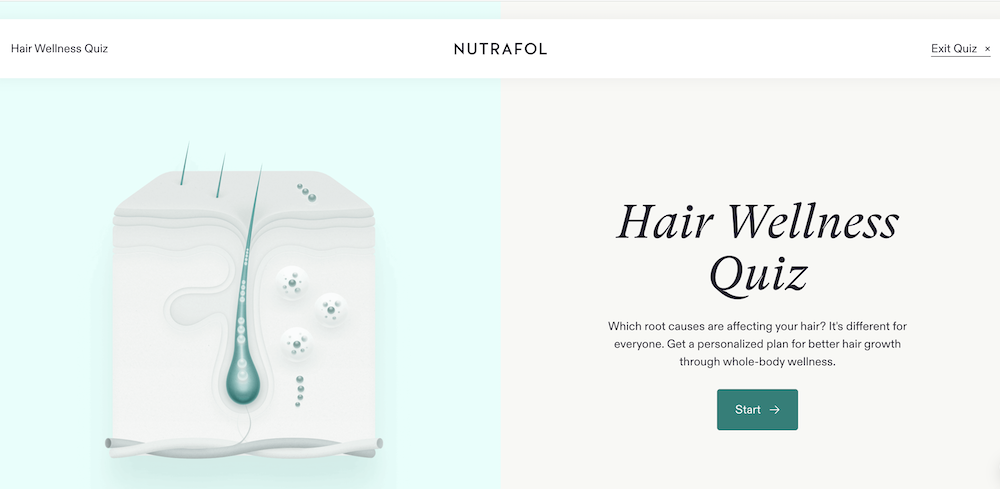
Vitamins Essential for Hair Growth
Vitamins and minerals play a crucial role in maintaining healthy hair growth. They provide the essential nutrients needed for the hair follicles to function optimally. A deficiency in these nutrients can lead to hair loss or hair that is weak, brittle, or slow to grow. Here's a list of key vitamins and minerals that are known to support hair growth:

Vitamin A: Vitamin A is involved in the growth and maintenance of all cells, including hair cells. It helps the skin glands produce sebum, an oily substance that moisturizes the scalp and keeps hair healthy. Sources include sweet potatoes, carrots, spinach, and kale.
B Vitamins (Biotin, Folate, B12): Biotin, or Vitamin B7, is one of the best-known vitamins for hair growth. It's involved in the production of keratin, the primary protein found in hair. A deficiency in biotin can lead to hair loss. Other B vitamins, including folate (B9) and B12, are essential for creating red blood cells, which carry oxygen and nutrients to the scalp and hair follicles. Sources include whole grains, almonds, meat, fish, seafood, and dark, leafy greens.
Vitamin C: Vitamin C is a powerful antioxidant that helps protect against the oxidative stress caused by free radicals. Additionally, it is necessary for the production of collagen, a key part of hair structure. Vitamin C also helps your body absorb iron, a mineral necessary for hair growth. Sources include citrus fruits, strawberries, peppers, and guavas.
Vitamin D: Low levels of vitamin D are linked to alopecia, a technical term for hair loss. Research also suggests that vitamin D may help create new follicles, the tiny pores in the scalp where new hair can grow. Sources of vitamin D include fatty fish, cod liver oil, some mushrooms, and fortified foods. Sunlight is also a significant source of vitamin D.
Vitamin E: Like vitamin C, vitamin E is an antioxidant that can prevent oxidative stress. Studies have shown that people with hair loss experienced an increase in hair growth after supplementing with vitamin E. Sources include sunflower seeds, almonds, spinach, and avocados.
Iron: Iron helps red blood cells carry oxygen to your cells. This makes it an important mineral for many bodily functions, including hair growth. Iron deficiency, which causes anemia, is a major cause of hair loss, especially in women. Sources include red meat, lentils, spinach, and iron-fortified cereals.
Zinc: Zinc plays a role in hair tissue growth and repair. It also helps keep the oil glands around the follicles working properly. Hair loss is a common symptom of zinc deficiency. Sources include beef, spinach, wheat germ, pumpkin seeds, and lentils.
Omega-3 Fatty Acids: Omega-3 fatty acids are important fats our body cannot make itself, and therefore must be obtained through our diet. They are found in the cells that line the scalp and also provide the oils that keep your scalp and hair hydrated. Sources include fish like salmon, mackerel, and sardines, as well as flaxseeds, chia seeds, and walnuts.
Incorporating a balanced diet rich in these vitamins and minerals can promote healthy hair growth and prevent hair loss. However, it's essential to consult with a healthcare provider before starting any supplement regimen, especially if you suspect that you're experiencing hair loss due to a nutritional deficiency.
NaturalAlternative Hair Loss Remedies
Rosemary oil is a popular natural remedy often cited for its potential benefits in addressing hair loss. Extracted from the leaves of the rosemary plant (Rosmarinus officinalis), this essential oil has been used for centuries in traditional medicine for a variety of purposes, including hair care. Recent research has begun to explore its effectiveness for hair growth, with some studies suggesting it may be as effective as minoxidil, a conventional treatment for hair loss, but with fewer side effects.
How Rosemary Oil May Benefit Hair Loss
- Stimulation of Hair Growth:Rosemary oil is believed to stimulate blood circulation to the scalp, which can promote hair follicle health and encourage hair growth.
- DHT Inhibition:Some research suggests that rosemary oil may help inhibit the activity of 5-alpha-reductase, an enzyme that converts testosterone to DHT, a hormone linked to hair loss in those genetically predisposed to androgenetic alopecia.
- Antioxidant Properties: Rosemary oil contains antioxidants that may help protect hair follicles from damage caused by free radicals.
- Anti-inflammatory Effects:The oil has anti-inflammatory properties that can help soothe the scalp and reduce inflammation around the hair follicles, potentially reducing hair loss associated with inflammatory scalp conditions.
How to Use Rosemary Oil for Hair Loss:
- Topical Application:The most common method is to mix a few drops of rosemary essential oil with a carrier oil (such as coconut, jojoba, or almond oil) and massage it into the scalp. Leave it on for at least 30 minutes or overnight before washing it out with a gentle shampoo.
- Rosemary Rinse:Some people prefer to make a rosemary rinse by steeping rosemary leaves in boiling water, cooling the mixture, and then using it as a final rinse after shampooing.
- Incorporation into Hair Products:Adding a few drops of rosemary oil to your shampoo or conditioner is another way to incorporate it into your hair care routine.
Safety and Considerations: While rosemary oil is generally considered safe for topical use, it's essential to conduct a patch test before applying it extensively to ensure there's no allergic reaction. Additionally, essential oils should be diluted with a carrier oil to prevent irritation. Pregnant or breastfeeding women and individuals with certain medical conditions should consult a healthcare provider before using rosemary oil.
Evidence and Research: Although anecdotal evidence supports the effectiveness of rosemary oil for hair growth, scientific research is still emerging. Some studies have shown promising results, but more extensive, long-term research is needed to conclusively determine its efficacy and safety.
In summary, rosemary oil is a natural remedy with potential benefits for hair loss and growth. Its natural properties offer a complementary or alternative option for those looking for holistic approaches to hair care. However, it's important to combine such treatments with a healthy lifestyle and consult healthcare professionals when dealing with significant hair loss issues.
Innovative Treatments for Hair Loss
The landscape of hair loss treatments is evolving rapidly, with innovative technologies and therapies offering new hope to those experiencing hair thinning and loss. Among these advancements, stem cell therapy, red light therapy, and exosome therapy stand out for their novel approaches to promoting hair growth and restoring scalp health.
Stem Cells for Hair Loss
Stem cell therapy represents a frontier in hair loss treatment, leveraging the body's own regenerative capabilities. Stem cells, with their ability to differentiate into various cell types, hold promise for regenerating hair follicles that have ceased producing hair. This therapy typically involves harvesting stem cells from the patient's body—often from fat or other tissues—and then processing these cells to concentrate the stem cells. These are then injected into the scalp, where they can potentially rejuvenate dormant hair follicles and stimulate new hair growth. While research is ongoing, early results from clinical trials and case studies suggest that stem cell therapy could effectively combat hair loss, offering a more permanent solution than current treatments.
Red Light Therapy for Hair Loss
Red light therapy, also known as low-level laser therapy (LLLT), utilizes specific wavelengths of red light to penetrate the scalp and stimulate hair follicles. This non-invasive treatment encourages cellular energy production and improves blood circulation in the treated areas, which can enhance the health and function of hair follicles. Red light therapy has been shown to increase hair density and thickness in some individuals, making it a viable option for those seeking to slow hair loss or encourage hair growth. It's particularly appealing because it's painless, has minimal side effects, and can be used in conjunction with other hair loss treatments.
Exosomes for Hair Loss
Exosome therapy is a cutting-edge approach that has garnered significant attention in the field of regenerative medicine, including hair loss treatment. Exosomes are extracellular vesicles released by cells that play a crucial role in cell communication, carrying proteins, lipids, and RNA to other cells. In the context of hair loss, exosomes derived from stem cells are believed to carry growth factors and proteins that can stimulate hair follicles, promote hair growth, and improve scalp health. This therapy involves injecting exosome-rich solutions into the scalp, where they can exert their effects on hair follicles. Although still in the early stages of research, exosome therapy has shown promising results in improving hair density and promoting hair regrowth, offering a novel, minimally invasive option for hair restoration.
These innovative treatments reflect the ongoing advancements in understanding and addressing hair loss. While they offer exciting possibilities, it's important for individuals considering these options to consult with healthcare professionals specializing in hair loss to determine the most appropriate treatment based on their specific condition and needs. As research continues and these therapies become more refined and accessible, they may redefine the approach to treating hair loss, providing more effective and long-lasting solutions for those affected by this common condition.
Conclusion
In conclusion, hair loss in women is a multifaceted issue that can stem from a variety of causes, ranging from genetic predispositions and hormonal imbalances to stress, nutritional deficiencies, and certain medical conditions. Understanding the underlying cause is crucial in selecting the most effective treatment approach.
Navigating through the complexity of hair loss requires patience and persistence. It's important to consult with healthcare professionals to tailor a treatment plan that addresses individual needs and underlying causes. With the right approach, many women find significant improvements in their hair's health and appearance, regaining not only their locks but also their confidence and well-being. Remember, you're not alone in this journey, and with the advancements in treatment options, hope and help are more accessible than ever.
FAQs?
Is hair thinning reversible?
Hair thinning, depending on its cause, can often be reversible or at least manageable. The potential for reversing hair thinning largely depends on the underlying factors contributing to the condition. Here are some common causes of hair thinning and the prospects for reversal:
Nutritional Deficiencies: Hair thinning caused by deficiencies in essential nutrients like iron, zinc, vitamins A, D, E, and the B-vitamins can often be reversed by addressing the deficiencies through diet changes or supplementation, as advised by a healthcare provider.
Stress (Telogen Effluvium): Hair loss resulting from stress, known as telogen effluvium, is typically reversible. Once the stressor is removed or managed, hair usually starts to regrow within a few months.
Hormonal Imbalances: Hair thinning due to hormonal imbalances, such as those associated with pregnancy, menopause, or thyroid issues, can often be reversible. Treatment of the underlying hormonal issue can lead to the restoration of hair growth.
Medication Side Effects: If hair thinning is a side effect of certain medications, hair growth may return to normal once the medication is stopped or changed, under the guidance of a healthcare professional.
Scalp Conditions: Scalp conditions like dermatitis or psoriasis that may contribute to hair thinning can often be treated. Effective management of these conditions can lead to an improvement in hair health and thickness.
Androgenetic Alopecia: For genetic hair loss (androgenetic alopecia), reversal can be challenging, but progression can often be slowed or managed with treatments like minoxidil, finasteride (for men), or low-level laser therapy. Early intervention is key to maximizing the effectiveness of these treatments.
Lifestyle Factors: Hair thinning caused by harsh hair care practices or lifestyle factors such as smoking can often be reversed by changing these habits. Adopting a gentle approach to hair care and improving overall lifestyle can significantly benefit hair health.
The approach to reversing hair thinning includes:
-Identifying the underlying cause:A healthcare provider can help determine the cause of hair thinning through a medical history, physical examination, and sometimes blood tests.
- Tailored treatments:Depending on the cause, treatments may include nutritional supplements, hormonal therapies, topical treatments like minoxidil, or procedures like hair transplantation.
- Lifestyle modifications:Improving diet, reducing stress, and avoiding harsh hair treatments can contribute to hair health and growth.
It's important to have realistic expectations and understand that while many cases of hair thinning can be improved, not all conditions will see complete reversal. Consulting with a healthcare professional or a dermatologist specializing in hair loss is crucial for an accurate diagnosis and appropriate treatment plan.
How long does it take to see results from hair loss treatments?
The time it takes to see results from hair loss treatments varies widely depending on the type of treatment, the underlying cause of hair loss, and individual factors such as health, age, and adherence to the treatment regimen. Here's a general overview of what to expect from some common hair loss treatments:
Minoxidil (Rogaine)
- Timeframe:Some people may start to see results within 3 to 6 months, with more significant results usually visible after 6 to 12 months of consistent use.
- Note:Initial shedding may occur as the hair follicles shift from the resting phase to the growth phase, which can be mistaken as hair loss worsening.
Finasteride (Propecia)
- Timeframe:It typically takes about 3 to 6 months to notice a decrease in hair loss, with significant hair regrowth potentially taking up to a year or more.
- Note:Finasteride is mainly used for male pattern baldness.
Low-Level Laser Therapy (LLLT)
- Timeframe:Improvements might be observed within 2 to 4 months of regular use, with more noticeable results often taking 6 months or longer.
- Note:Consistency is key, and results can vary significantly between individuals.
Hair Transplant Surgery
- Timeframe:It can take 6 to 12 months to see the full results of a hair transplant, as transplanted hair falls out and then starts to grow back in the months following the procedure.
- Note:This is considered a more permanent solution but requires a significant recovery and growth period.
Nutritional Supplements and Diet
- Timeframe:If hair loss is due to nutritional deficiencies, improvements might be seen within 3 to 6 months after addressing the deficiency through diet or supplements.
- Note:The effectiveness depends on accurately identifying and correcting specific nutritional deficiencies.
Platelet-Rich Plasma (PRP) Therapy
- Timeframe:Initial improvements may be noticed after 1 to 3 months, with more significant results typically seen after 3 to 6 months, following multiple treatment sessions.
- Note:Results and necessary treatment frequency can vary based on individual response.
Topical Essential Oils (e.g., Rosemary Oil)
- Timeframe:While less studied, anecdotal evidence suggests that results might be observed after 6 months to a year of consistent application.
- Note: These natural remedies may work best as supplementary treatments.
General Considerations:
- Patience and Consistency:Hair growth is a slow process, and treatments often require consistent application or use for several months before results are visible.
- Monitoring Progress:It's important to take pictures or keep a diary to objectively monitor progress over time.
- Professional Guidance:Consulting with a healthcare professional can help tailor treatments to your specific condition and adjust approaches based on response.
It's important to maintain realistic expectations and understand that results can vary widely. Some individuals may respond well to treatment and see significant improvements, while others may only experience minimal changes. Continuous evaluation and adjustments to the treatment plan, under the guidance of a healthcare provider, are often necessary to achieve the best possible outcomes.











